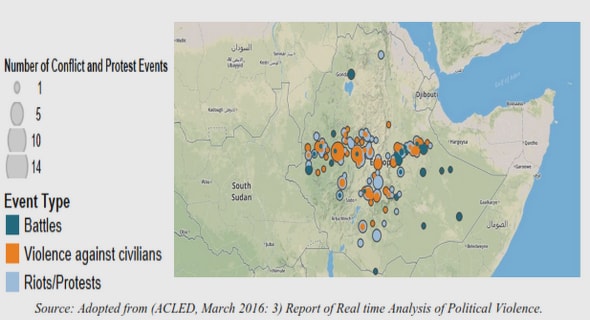Get Complete Project Material File(s) Now! »
METHODS
In this study the structural setting associated with uranium mineralization in the Coles Hill deposit has been characterized. To accomplish this, structural discontinuities, including mylonitic foliation and multiple fracture orientations were measured in outcrops and drill core (Figure 4). Structural trend discontinuity orientations were obtained and reported in azimuth 0 – 180°.
Five large pavement outcrops (Figures 4,5) were selected, and these are located at different distances from the two major structural features in the Coles Hill area, namely the Chatham fault and cross faults that are oriented perpendicular to the Chatham Fault. This approach was used to test whether structural discontinuities at Coles Hill could be related to these major structural events and if the intensity of fractures varies as a function of distance from the Chatham Fault and/or cross faults. Outcrop fracture orientations were examined to test for relationships with the major structural features in the area. Only strikes were measured in outcrops. Outcrop SPG 223 near the Frith House was located in the mylonitic gneiss unit and approximately 20 meters from the nearest surface exposure of one of the cross faults and 400 meters from the nearest surface exposure of the Chatham Fault. Outcrop GTA 894 in the mylonitic gneiss within Whitethorn Creek was located 300 meters from the nearest surface exposure of a cross fault and 20 meters from the surface exposure of the Chatham Fault.
Outcrop SPG 223 (Figure 5) was a relatively flat surface consisting of mylonitic gneiss believed to be derived from Leatherwood Granite (Henika et al., 1981) and measures approximately 5 meters by 10 meters. Following washing with high-pressure water to remove vegetation and other debris, six 50 cm by 50 cm windows were selected for detailed analysis (Figure 6). The windows were chosen to include all structural discontinuities in the outcrop. The orientation of every discontinuity (fractures, planes of foliation, and orientations of quartz veins) within each window was measured. Windows 1 and 2 contain few fractures but many foliation planes were observed and measured. Windows 3 and 4 contain high densities of both fractures and foliation planes. Windows 5 and 6 contain abundant unltramylonite and quartz veins and fractures.
Outcrop GTA 894 also consisted of mylonitic gneiss believed to be derived from Leatherwood granite (Henika et al., 1981) and measured approximately 3 by 5 meters. Owing to the smaller size of outcrop GTA 894 the entire outcrop was selected and every observable structural feature was measured, including fractures, quartz veins and foliation planes.
Three outcrops (Figures 4,5) in the Triassic basin were also studied and these were located at various distances from the Chatham Fault. Every structural discontinuity observed within a 5 by 5 meter square was measured. Outcrops SPG 231, SPG 311 and MA 771 (Figure 5) are located less than 1 km, approximately 2 km and approximately 3 km, respectively, from the surface expression of the Chatham Fault.
During an earlier exploration program in the 1980’s, Marline Inc. (Marline, 1982), drilled 12 oriented core holes at Coles Hill. Structural discontinuities, including fractures, foliation and quartz veins were measured in three drill cores from this earlier exploration program. The drill holes selected were along a transect that crossed the southern ore body and extended from the crystalline rocks west of the Chatham Fault and across the Chatham Fault into the Triassic basin. Drill core 41-190 is located 500 meters west of the Chatham Fault and is collared within the mylonitic gneiss unit in the southern ore body. Drill core 41-193 is collared approximately within the surface expression of the Chatham Fault and becomes progressively more distant from the Chatham Fault with depth. Drill core 57-27 is collared in the Triassic sedimentary rock and drilled at an angle of 53° so that the hole crosses the Chatham Fault at a vertical depth of approximately 39.5 meters (100 meters of drill core length) and extends into the crystalline rocks west of the Chatham Fault.
The orientations of mylonitic foliations and fractures in drill cores were measured along the entire length of the core, except where core had been removed and destroyed during assaying by Marline Inc. Because the drill holes were not drilled vertically (i.e., perpendicular to the surface), the orientation had to be corrected in order to record the correct structural orientations with respect to geographic coordinates. The drill cores were all drilled with an azimuth of 028° and this orientation had been marked on the core during drilling. To return the orientation to vertical, the core was placed into a Styrofoam holder that was attached to the center of a non-metallic table on which compass directions had been marked (Figure 7). The Styrofoam holder was inclined at the angle of the drill holes. Each piece of drill core was inserted into the Styrofoam holder, the azimuth was set at 028°, and the angle of the core was set at either 52° (cores 41-190 and 41-193) or 53° (core 57-27). Then, the orientations of structural discontinuities were measured and these orientations represented the orientations of these features after correcting for plunge and trend of the drill core.
Data were plotted on either equal area 2% contour maps (drill core) or rose-diagrams (outcrops) using RockWare StereoStat. Strikes and dips were manually entered into excel like spreadsheets composed of columns. A negative sign was entered for dips to the south otherwise the program assumes a north dip. Then the poles to the planes were calculated and contoured at 2%. Rose-diagrams for outcrops were done by entering the data in the same spreadsheet but without dips
RESULTS
Fracture orientations and foliation planes in drill core and outcrops were measured to test whether these structural features correlate with regional structural trends defined by the Chatham Fault, Brookneal Shear Zone or cross faults in the vicinity of Coles Hill.
In drill core 41-190, the dominant set of fractures strikes 030° and dips 60° to the SE (Figure 8). A less abundant set of fractures strikes 130° and dips about 80° degrees to the SW (Figure 8). Foliation orientations show a similar pattern with a dominant foliation striking 035° and dipping about 60°SE (Figure 9). Both the foliation and the fracture orientations are similar to the strike of the Chatham Fault and Brookneal Shear Zone, both of which strikes approximately 030° and dip 60° to the SE (Gates, 1981; Jerden, 2001).
Drill core 41-193 also shows a dominant fracture set striking 030° and dipping about 60° to the SE (Figure 8). Unlike core 41-190, the less abundant set of NW striking fractures is not present in this core (Figure 8). The foliation shows a dominant strike direction of 020° and dip of 60° SE (Figure 9). Again, these structural orientations are similar to the strike of the Chatham Fault and Brookneal Shear Zone.
Drill core 57-27 is collared in and passes through 100 meters of Triassic sedimentary rocks before reaching the crystalline rocks beneath the Chatham Fault. Fractures in the crystalline rocks are oriented 070° and dip 70° SE (Figure 8). Fracture orientations in the Triassic rocks in this drill core strike 120 – 130° and dip 60° to the SW (Figure 8) and are similar to fracture orientation in Triassic rocks measured away from the Chatham Fault (Figure 10). A few horizontal fractures, are also observed in this core (Figure 10). A third set of fractures in this drill core strikes approximately E-W and is steeply dipping. The NW/SE strikes of fractures in the Triassic are similar to the cross faults (Figure 3).
Outcrop SPG 223 shows a dominant NW/SE fracture orientation (Figure 8). This strike is different from the dominant NE/SW fracture orientation observed in drill cores. Outcrop SPG 223, which is located 20 meters from a cross fault, shows a dominant fracture orientation that is more closely related to the cross faults than to the Chatham Fault.
Outcrop GTA 894 is located near the Chatham Fault and contains 17 fractures striking NE/SW, similar to the strike of the Chatham Fault. Outcrop GTA 894 shows a dominant NW/SE fracture orientation (Figure 8).It is important to note that the NW/SE fractures related to basin inversion (Schlische et al., 2002), cross cut and are later than the NE/SW fractures that correspond to the strike of the Chatham Fault and Brookneal Shear Zone. Foliation orientations within the two outcrops are similar and strike 040 – 050° (Figure 9). Moreover, only one foliation strike was observed in each of these outcrops. As a result, only a few representative measurements of foliation were obtained from each outcrop.
Fracture orientations from all three Triassic outcrops, SPG231, SPG 311 and MA 771, have a dominant NW/SE strike (Figure 10). Outcrops SPG 231 and SPG311 also show a NE/SW fracture pattern that resembles the trend of the Chatham Fault. The number of NE/SW fractures decreases as the distance from the Chatham Fault increases. For example SPG 231 (Figure 10) contains 17 fractures out of 87 (~20%) that strike 030°, whereas in outcrop SPG 311, located 2 km from the Chatham Fault, only 6 (out of 45 fractures measured (~13%) strike 030° (Figure 10). The outcrop most distant from the Chatham Fault (MA 771) contained no fractures striking 030° (Figure 10)
ABSTRACT
ACKNOWLEDGEMENTS
INTRODUCTION
GEOLOGIC EVOLUTION IN THE VICINITY OF COLES HILL AND WESTERN PIEDMONT
METHODS
RESULTS
INTERPRETATION
REFERENCES CITED
APPENDEX
GET THE COMPLETE PROJECT


